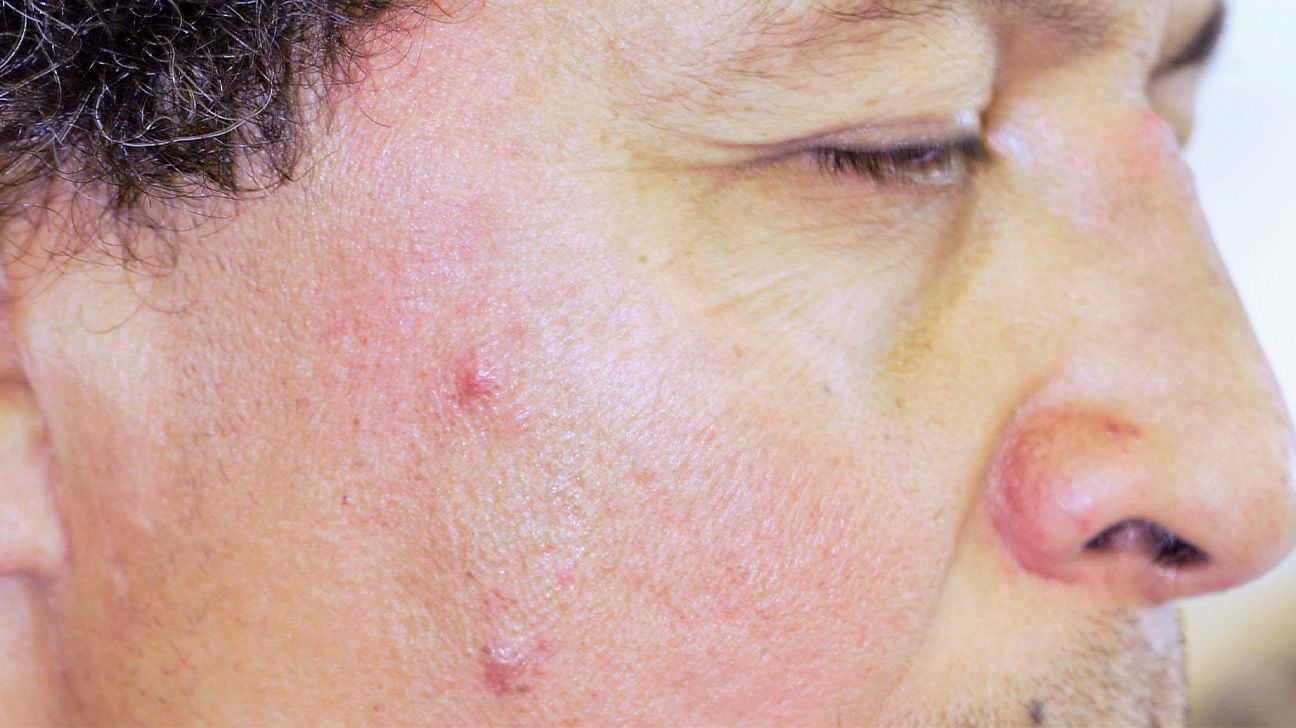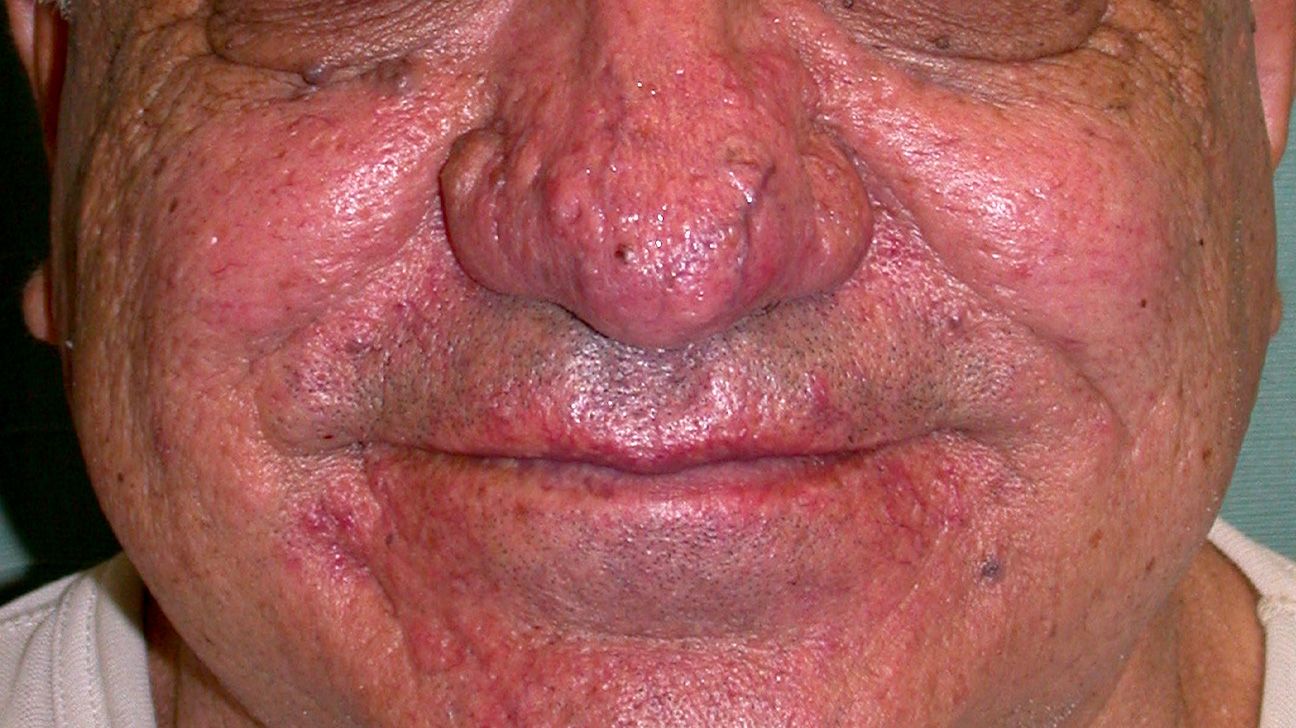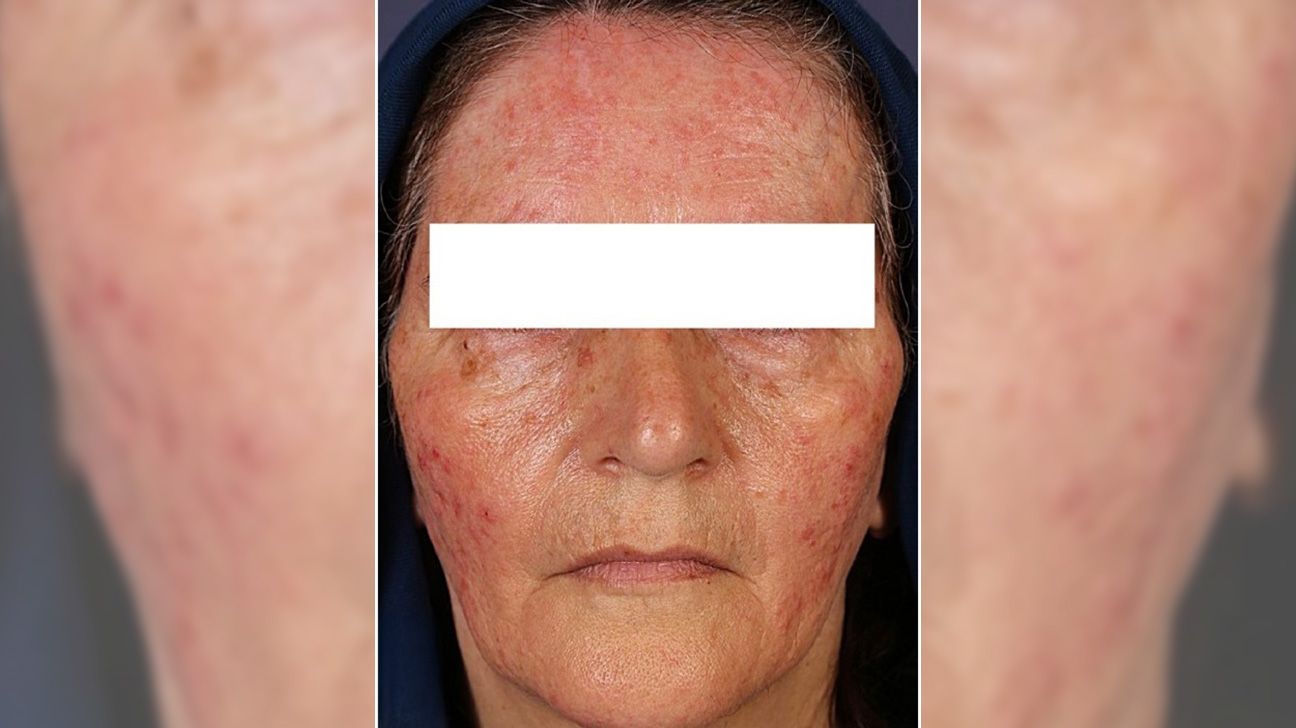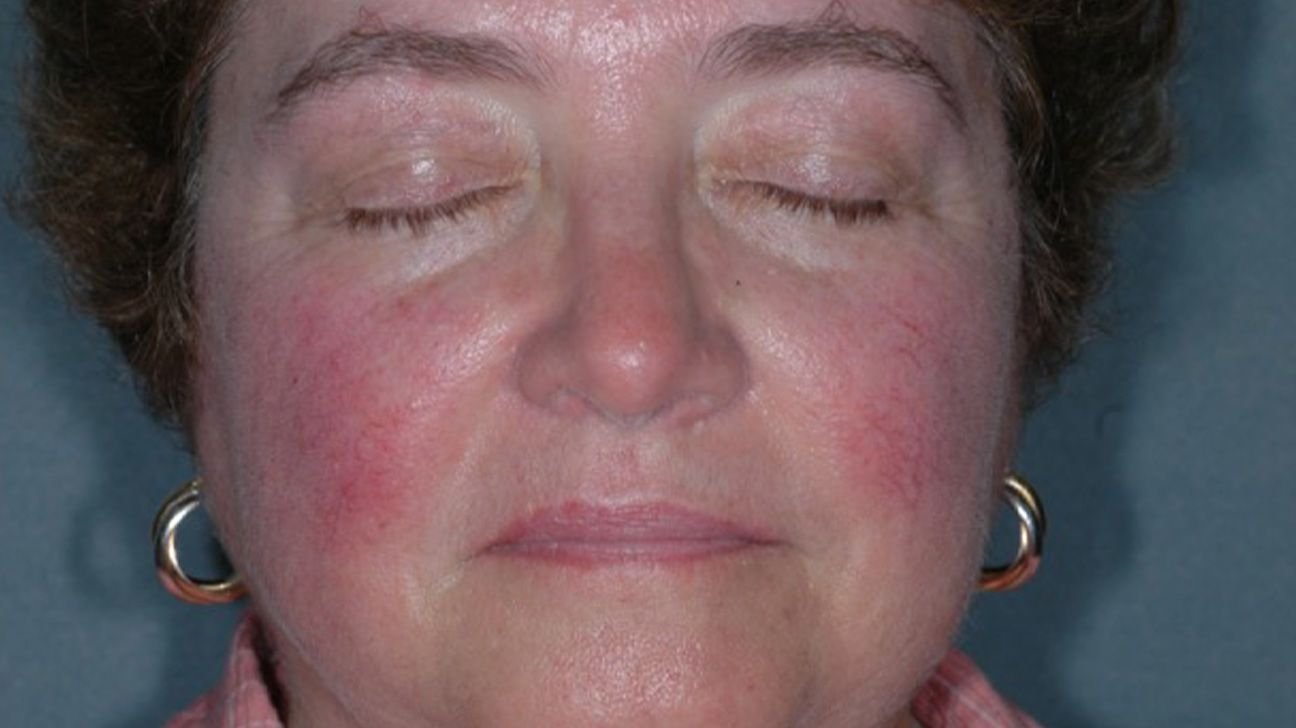Vascular rosacea causes skin discoloration in the central area of the face that may come and go. Topical treatments and lifestyle measures can help, including avoiding things that trigger a flare-up.
Vascular rosacea, also called erythematotelangiectatic rosacea, is a chronic (long-term) type of skin inflammation that typically affects the nose, cheeks, forehead, and chin. It is not contagious.
Doctors classify rosacea into
- vascular
- inflammatory or papulopustular
- phymatous
- ocular
Each type has varying symptoms. People can have a combination of symptoms from different types.
Because it is often highly visible, rosacea can negatively affect a person’s self-esteem and confidence. However, medical treatment, the right skin care, and avoiding triggers can improve symptoms and emotional well-being.
Here are some pictures of people with vascular rosacea.





The symptoms of rosacea vary from person to person. Although it is easier to recognize on light skin tones, rosacea can affect anyone, regardless of skin color.
The main symptoms of vascular rosacea in people with light skin are:
- flushing and redness of the central part of the face that becomes ruddier over time
- visible blood vessels
- skin sensitivity and irritation
- persistent warm-feeling skin
- burning or stinging when applying skin care products
People with dark skin tones may experience the above symptoms with the following symptoms:
- dry, swollen skin
- darker or lighter patches of skin
It is common for people to have symptoms of vascular rosacea alongside symptoms of papulopustular rosacea, which include:
- acne-like breakouts that cause:
- papules (red bumps)
- pustules (pus-filled spots)
As vascular rosacea progresses, it may cause symptoms characteristic of other types, such as:
- Phymatous rosacea: The skin thickens and becomes bumpy, particularly on the nose, which may cause it to enlarge.
- Ocular rosacea: The eyes and eyelids sting and become inflamed, watery, and bloodshot.
Read more about types of rosacea.
People with light skin who tend to flush or blush easily may have a greater risk of developing rosacea. Other risk factors include:
- being over 30 years old
- having light skin with blond hair and blue eyes
- having a blood relative with rosacea or severe acne
- having lots of acne breakouts
- going through menopause
Scientists are unsure exactly what causes rosacea, but they have some promising lines of research.
The role of the immune system
Many people with rosacea have a significant increase in mast cells, which are white blood cells in the immune system.
Mast cells are located in connective tissues throughout the body,
According to the American Academy of Dermatology, the way the body processes cathelicidin, a protein in the immune system, may influence whether a person develops rosacea. Cathelicidin usually protects the skin from infection. It may play a role in causing skin color changes in rosacea.
Demodex mites
Another possible cause of rosacea is the increased presence of a common microscopic mite called Demodex folliculorum. This mite is more abundant on the skin of people with rosacea.
Inflammation
Studies have found associations between rosacea and systemic conditions, such as cardiovascular disease, gastrointestinal disease, and autoimmune conditions. This suggests that rosacea may develop due to inflammation throughout the body.
Bacterial infection
According to the American Academy of Dermatology, H. pylori infection stimulates the immune system and may play a role in rosacea. The organization notes that some research has found that rosacea improves after treatment for H. pylori, but other research has found no effect. More research is necessary.
Genetic variations
Variations in genes may also play a role in causing rosacea, as it tends to run in families.
Rosacea can flare in response to various triggers. Triggers vary from person to person, but common ones include:
- sunlight
- stress
- alcohol consumption, especially red wine
- heat or cold
- windy weather
- spicy food
- exercise
- some skin care products
- some medications, such as beta-blockers
To diagnose rosacea, a doctor or dermatologist will first ask about any skin irritation, dryness, or discomfort. They will then examine the skin for discoloration, warmth, the presence of papules or pustules, and visible blood vessels. They may also look at the eyes for signs of irritation.
To help identify rosacea triggers, a doctor may suggest keeping a symptom diary and avoiding likely triggers.
As well as avoiding triggers, it is important to follow a skin care routine that will not irritate the skin. The following tips may help:
- Clean the face with a mild cleanser, rinse with lukewarm water, and pat the skin dry with a soft towel rather than rubbing it.
- Use a gentle, over-the-counter cleanser rather than soap.
- Use a fragrance-free, hypoallergenic moisturizer regularly to reduce dryness.
- Use at least an SPF 30 mineral (“physical”) sunscreen containing titanium dioxide or zinc oxide rather than a chemical sunscreen.
- Avoid exfoliating the skin.
- Avoid skin care products containing alcohol.
- Avoid using topical steroids on areas of rosacea.
Read about skin care products to try for rosacea.
A doctor will recommend treatment for rosacea based on a person’s symptoms.
For skin flushing and discoloration, a doctor may prescribe topical medications, such as brimonidine or oxymetazoline.
A doctor may also prescribe medications off-label. “Off-label” means the Food and Drug Administration (FDA) has not approved a medication for use in treating rosacea, but doctors have seen a benefit. These medications include carvedilol and cromolyn.
Topical medications for papules and pustules include:
- ivermectin
- azelaic acid
- sodium sulfacetamide
- metronidazole
- benzoyl peroxide
Oral medications for papules and pustules include:
Botox may also be available off-label to treat rosacea symptoms.
Laser and intense pulsed light treatments can help remove visible blood vessels and reduce skin discoloration. Most people require a series of treatments spaced 3 to 4 weeks apart.
Learn more about laser treatment for rosacea.
Rosacea cannot be cured, but it is manageable with lifestyle measures, a careful skin care routine, and by avoiding triggers.
Without treatment, rosacea can worsen and cause more noticeable symptoms. This can negatively affect a person’s self-confidence and quality of life.
Are there any natural remedies for vascular rosacea?
There are many natural treatments that may help rosacea, but they may affect people’s skin differently. They include aloe vera gel, burdock, oatmeal, and certain essential oils.
How can I prevent vascular rosacea flare-ups?
To avoid a rosacea flare-up, avoid triggers such as eating certain foods, exposure to extreme heat or cold, and stress. It is also important to adopt a gentle skin care routine and avoid products that cause a burning or stinging sensation.
How often should I see a healthcare professional for vascular rosacea?
A doctor will suggest how often a person should visit them based on how well the person is managing their rosacea. If flare-ups are frequent and affect a person’s quality of life, it is important to find a treatment regimen that works. A doctor will want to meet regularly to suggest ways of preventing flare-ups.
Vascular rosacea is a chronic skin condition caused by inflammation. It causes skin discoloration, flushing, and skin sensitivity. It may also include acne-like breakouts. Without treatment, rosacea can worsen and may negatively affect a person’s emotional well-being.
To prevent flare-ups, people can try avoiding triggers and stick to a gentle skin care routine. Doctors may prescribe oral or topical medications to help manage symptoms.
Working with a doctor to find the right treatments can help improve quality of life and well-being.


